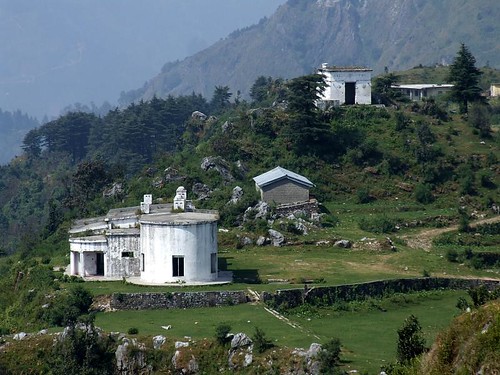Day 17
Haridwar is an important pilgrimage city and one of the seven holiest city in India. This city is located in the northern Indian state of Uttarakhand. Haridwar literally means Gateway to God.In ancient times the city was also referred to as Gangadwar, the place where Ganga descends to the plain.According to the legend, Prince Bhagirath performed penance here to salvage the souls of his ancestors who had perished due to Sage Kapil's curse.The penance was answered and river Ganga tricled forth from Lord Shiva's locks and its bountiful water revived the sons of King Sagara. In the tradition of King Bhagirath, devout Hindus stand in the sacred waters here, praying for salvation of their ancestors.Haridwar is a Vegetarian city by law , as well as alcohol-free city as alcohol is banned here.
How to reach here:
By Air: Jolly Grant Airport of Dehradun which is 20 Kms away is the nearest airport.
By Rail: Haridwar Junction Railway station is well connected by trains with the major cities of India.
Best time to visit: October to March
Languages spoken: Hindi, Garhwali, Punjabi and English
Must eat: Dhokaar Dalna
Famous Restaurants: Hotel Hoshiarpuri, Bestee Restaurant, Siwalik, Mansarover and Aahar.
Places you must visit:
Har-Ki-Pauri is believed to be the exit point of Ganga from the mountains to the plains. This Ghat (Brahmakund)was built by King Vikramaditya in memory of his brother Brithari who often meditated on the banks of Ganga. History records an imprint of Lord Vishnu's foot on one of the stones present on the ghat.The golden reflection of the floral diyas in the river Ganga is the most enchanting sight in the twilight during the Ganga aarti ceremony at the Ghat.
 Chandi Devi Mandir
Chandi Devi Mandir is known to be a divine place where wishes are granted and fulfilled by Goddess Chandi. This temple is situated on a hill top (Neel Parvat) constructed by Suchat Singh, the then King of Kashmir in 1929 AD.Skanda Purana mentions a legend, in which Chanda- Munda, the army chief of the local Demon Kings Shumbh and Nishumbha were killed by Goddess Chandi here, after which the place got its name Chandi Devi.It is believed that the main statue was established by Adi Shankaracharya in 8th century AD. One can either take a ropeway ride to the temple or trek 3Km from Chandighat.

Mansa Devi Temple is situated at the top of Bilwa Parvat. The temple of Goddess Mansa Devi literally meaning the Goddess who fulfills desires (Mansa).The main temple houses two idols of the Goddess, one with three mouths and five arms and other with eight arms. The devotees tie sacred threads on the sacred tree that stands in the temple premises.Once the wishes are fulfilled, the devotees mark respect by returning to the tree to untie the thread.
 Maya Devi Temple
Maya Devi Temple is an ancient temple dated back to the 11th century. This Adhisthatri ( known to be the incarnation of power or shakti) deity of Haridwar is considered one of the Siddhapeeths and is said to be the place where the heart and navel of Goddess Sati had fallen.
.JPG/280px-Maya_Devi_Temple,_Haridwar(3).JPG) Kankhal
Kankhal is a town where the ancient Daksha Mahadev also called as Dakhsheswara Mahadev temple is situated. According to Hindu texts, King Daksha Prajapati, father of Sati (Dakshayani), Lord Shiva's first wife, performed a yagna, to which he deliberately did not invite Lord Shiva.When he arrived uninvited, he was further insulted by the king, seeing which Sati felt infuriated and she self-immolated in the Yagna Kund.King Daksha was later killed by the demon Virabhadra, born out of Shiva's anger. Later the king was brought to life and was given a goat's head by Lord Shiva. This temple is a tribute to this legend.
Sati Kund, another well known mythological heritage worth a visit is located in Kankhal. Sati immolated herself in this Kund.
 Piran Kaliyar
Piran Kaliyar is a Dargah of Alauddin Sabir Kaliyari , a 13th century Sufi saint of Chisti order was built by Ibrahim Lodhi , a ruler of Delhi.It is a living example of religious harmony in India.During the annual Urs festival it is visited by many devotee from all over the world.
 Neel Dhara Pakshi Vihar
Neel Dhara Pakshi Vihar is a bird Sanctuary situated on the main Ganga river, or Neel Dhara, at the Bhimgoda Barrage. It is a paradise for bird watchers and home to many migratory birds during the winter season.

Bhimgoda Tank - It is said that while Pandavas were going to Himalayas through Haridwar, Bhima drew water from the rocks here by thrusting his knees(goda), to the very ground.

Doodhadhari Barfani Temple is one of the most beautiful temple in Haridwar. It is made up of white marble. This temple is dedicated to Ram- Sita and Hanuman.

Jairam Ashram is very famous for its diorama exhibition and a massive white statue depicting the famous Samudra Manthan episode.

Sapt Rishi Ashram and Sapt Sarovar is a picturesque place where seven great sages or Saptarishis, namely Kashyap, Vashisth, Atri, Vishwamitra, Jamdagni, Bharadwaj and Gautam are said to have meditated. The Ganga split herself into seven currents at this place so that the Rishis would not be disturbed by the flow.
 Parad Shivling
Parad Shivling is situated in the Harihar Ashram in Kankhal.Parad Shivling (Mercury Shivling) weighing about 150 Kgs and the Rudraksh tree are the main attractions.

Anandmayi Maa Ashram houses the samadhi shrine of Shri Anadamoyi Maa (1896-1982), a noted saint in India.

Shantikunj is a headquarter of famous spiritual and social organization All World Gayatri Pariwar (AWGP) established by Shriram Sharma Acharya.It is a place of attractions for tourist as well as seekers of spiritual guidance.

Pawan Dham is a modern temple made entirely from glass pieces. The temple complex was constructed by the effort of His Holiness Swami Vedantanand Maharaj and is growing under the leadership of Swami SahajPrakash ji Maharaj.

Bharat Mata Mandir is a multi-storey temple dedicated to Bharat Mata, Mother India , with each floor depicting an era in the Indian history, from the days of Ramayana till India's Independence. The temple was built under the auspicious blessings of the honorable former Shankaracharya His Holiness Maha-Mandleshwar Swami Satyamitranand Giriji Maharaj. This mandir was inaugarated on May 15, 1983 by Hon.Smt. Indira Gandhi and stands along the river Ganga. On the first floor is the statue of Bharat Mata. The second floor 'Shoor Mandir' is dedicated to the well renowned heroes of India. The third floor 'Matru Mandir' is dedicated to the achievements of India's revered women. The great saints from various religions are featured on the fourth floor 'Sant Mandir'. The Assembly Halls with walls depicting symbolic coexistence of all religions practiced in India and the painting portraying history and beauty is situated on the fifth floor.The various forms of Goddesses of Shakti are found on sixth floor.The seventh floor is devoted to all the incarnations of Lord Vishnu. The eight floor holds the shrine of Lord Shiva from which one can gain a panoramic view of the Himalayas.

Patanjali Yogpeeth (Trust) is a Yoga institution and research center of Swami Ramdev. Every day more than thousand people gather here for yoga and other purposes.

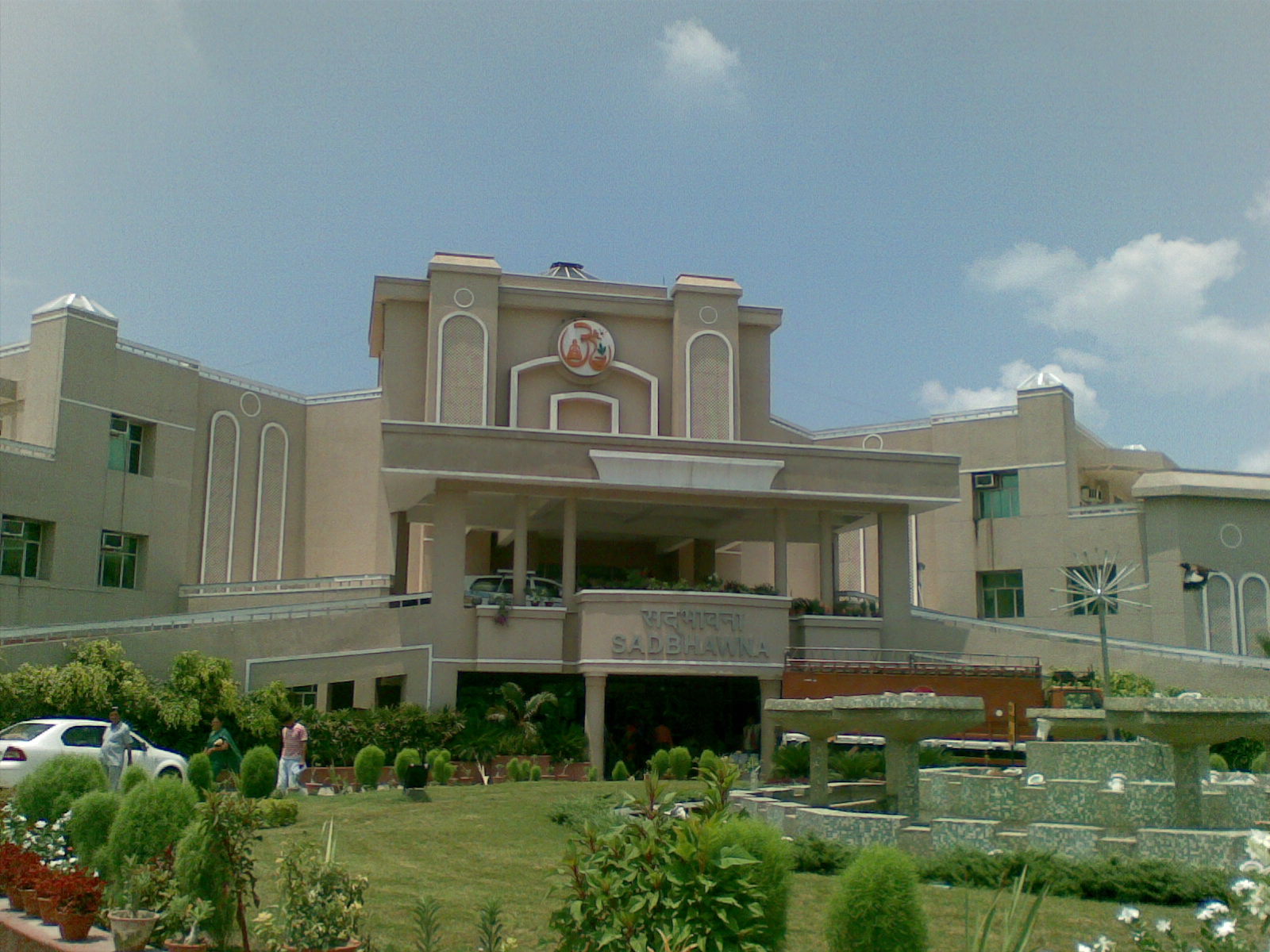
Vaishno Devi Temple is the replica of the temple in Jammu.This temple was recently built. Similar to the temple in Jammu, the path leading to worship Goddess Vaishno Devi is full of tunnels and caves.

Gurukul Kangri Vishwavidyalaya was founded on March 4, 1902 by Swami Shraddhanandaji with the sole aim to revive the ancient Indian Gurukul system of education. This institution was established with the objective of providing an indigenous alternative to Lord Macaulay's education policy by imparting education in the areas of Vedic Literature, Indian philosophy, Indian culture, modern sciences and research.

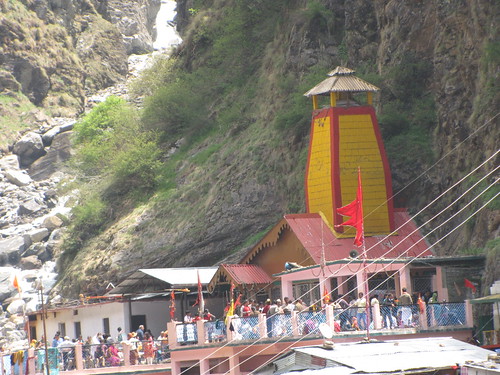

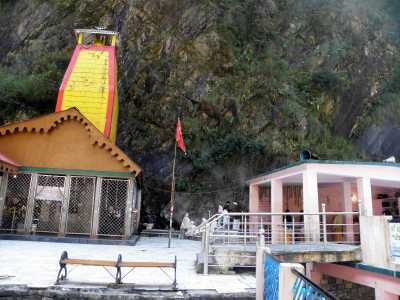


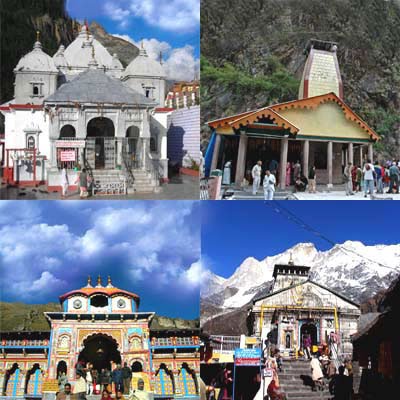












.JPG/280px-Maya_Devi_Temple,_Haridwar(3).JPG)



























